AVIVA-Berlin >
Jüdisches Leben > Writing Girls
AVIVA-BERLIN.de 3/30/5786 -
Beitrag vom 16.12.2012
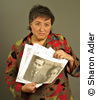
Here lived - Hier wohnte
Sharon Kuckuck
Project Consultant and Jewish tour guide Sharon Kuckuck discovers a rich emotional connection to Jewish history in Berlin when she researches the Stolpersteine laid at her door.
NicheôÇs Story
| 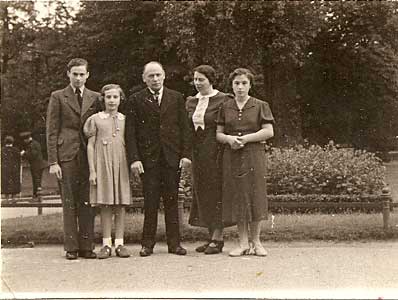 |
left-to-right: Simson, Rita, Julius, Niche, Pia |
It was April 21st 2012 when I first met Niche Scherl and her son Simson. They had lived in my building, one floor up and across the hall 71 years ago. I thought of them every time I tried to step around their tiny
Stolpersteine as I opened my front door.
Niche was the daughter of Sara and Pinkhas in Galicia. They came to Berlin for a better life. They had a store below me where the Thai Restaurant is today. Their daughter Pia told me about the great pride her parents Niche and Julius took in their business. They sold
"quality" she said,
"good carpets, fine furniture and Rosenthal porcelain". Clients came just to talk with her mother:
"She had great humour and energy".Niche
"took great care of herself, every day exercising in front of the living room window" and she
"fed us children very healthy food. I can still taste the food in my mouth". "They ate kosher, even closed the store every Saturday, and didnôÇt always make it to synagogues on Mû¥nchenerstraûe or Passauerstraûe, but we never missed a holiday".We are neighbours and live on the same block.
We both love and care for our children. | 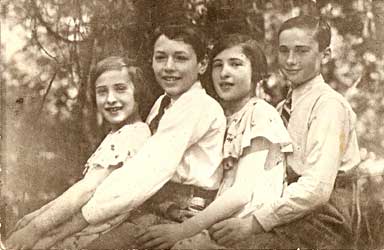 |
left-to-right: Rita, Paul (cousin), Pia, Simson. |
NicheôÇs two daughters ã Pia and Rita ã took piano lessons but it was their brother Simson who played better than either of them and
"without lessons". Pia was fit like her mother but she also loved to swim,
"not just in the pools but also in Wannsee".Pia and Simson shared a love of sports and when the Olympics were in Berlin in 1936 they went and watched the soccer games. When she asked him to teach her to ride a bike Simson was
"the one to do it".
Like every family, they had their secrets. Every month Niche sent Pia to the Post Office.
"My father, brother and sister didnôÇt know that my mother was sending money to the family in Poland." Pia and her mother were very close.
They lived on my block and life was good until
"that horrible man came to power".
| 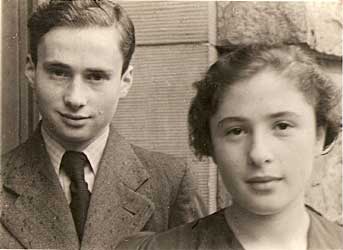 |
left-to-right: Simson, Pia |
Pia remembers Hitler, hearing his voice on the radio ...
"And I remember Nazis came at night to the homes of Jewish families, dragged them out, first in the north of Berlin, tortured them, killed them".PiaôÇs father, Julius, died of a heart attack in December 1937.
"The stress was too much after Hitler came to power", Pia told me
"When the doctor came to the house after the heart attack he told us it was the terrible time and that Hitler had killed my father".For
"each of the 7 days they sat Shiva, a young man came to visit" and Pia wondered why he came each day.
"He told us his family was very close to our father." His family had known PiaôÇs father Julius from the synagogue. The young man wanted to help the girls leave but
"it was illegal". Niche had said
"no" and waited
"for the certificate to arrive" from her uncle in America. But it never did.
Hitler drew the noose tighter around the necks of the JewsOn the evening of 9 November 1938 the pogrom, euphemistically called
Kristallnacht, started. Pia remembers all of them sitting in the apartment and looking at
"each otherôÇs white faces". "It was horrible for us, we could hear what was going on outside".They had to leave as soon as possible.
Pia, then 16 years old, fled
"illegal." Her mother took her to the train station, where
"there were many SS men", Pia said. Niche made sure her daughter boarded the train.
"With great grief we parted". In Vienna Pia boarded the ship alone.
"It was four months with 2,000 people on a dirty freezing ship". "People died and two babies were born before we landed in Palestine".
In Palestine Pia married that
"young man" who had had visited her every day in Berlin and who had begged her to leave "illegal". Louis had already professed his love in letters while he waited a year for her to come to Palestine to be with him.
PiaôÇs sister Rita had gone on an earlier
Kindertransport to London. It was quite a while before they found each other and before Rita joined them in Palestine.
It was many years, though, before Pia found out the truth about her mother and brother Simson in Berlin. A professor ã Miriam Gillis-Carlebach ã had researched the transports to Riga and contacted Pia in Palestine. Professor Gillis-Carlebach told her that on 27 November 1941 Niche and Simson had left on a transport from Berlin to Riga. This Pia knew. But that they had been killed just three days later on 30 November in the forest of Bikernieki was new to her.
| 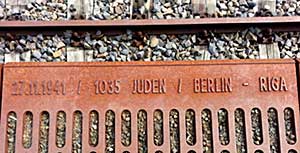 |
Track 17, Train Station Memorial (transport date for Niche and Simson) |
It breaks my heart to think that a mother had to decide to send her daughters away. Her son Simson stayed behind. I wanted to ask Pia why, but I couldnôÇt. She had told me what she had wanted to say, and no more, in those two phone calls to Israel.I know she has sorted out her memories, what to tell and what to keep for herself.
Germany had invited her to visit. At first PiaôÇs husband Louis, that young man who came each day she had sat Shiva, didnôÇt want to come or even fly over German territory. But when he turned 70 he agreed, and they came to Germany.
"They treated us nice, we went to opera, we saw how cultured they were, to show us how Germany had changed". "Never forgive and forget but...." Her voice trails off.
After that trip to Germany Pia got sick and
"was in hospital because it was all too much". Then she wrote down all her memories, for herself, as much as she could remember. She read it once out loud when 40 children, now adults from the
Kindertransport, came to visit her house in Israel. They said she should publish it, that it was so well written in German, but she never did. I asked her if I could read it, but she said it was just for that day.
On Friday the 20th of April 2012, 71 years after Niche and Simson were deported from Berlin, NicheôÇs great-grandson Ron returned with his uncle Yoel from Israel to lay those shiny little
Stolpersteine, stones of remembrance, before my door. I asked them which apartment Niche and Simson had lived in, and they told me. A neighbour quietly said:
"ItôÇs good they didnôÇt live in your apartment. What a terrible history". But I thought it was better that the victims rather than the perpetrators had lived in my home. I told Ron that my daughter becomes a Bat Mitzvah this year and that we were glad a Jewish family lives in this building, again.
It is complicated being Jewish here in Berlin, but the world is complicated. And when I give Jewish tours, I answer the first question How? without waiting to be asked. I cannot answer why. There are only clues. It is inexplicable.
Pia turned 90 this year. She spoke in a beautiful clear voice on the phone, and full of energy. She and her sister Rita have 5 children, 11 grandchildren and 3 great-grandchildren, one of whom lives in Berlin.
Thank you, Pia, for sharing your story with me.
My StoryWriting about Niche Scherl seemed like a very straightforward idea: check the archives, contact the local museum which oversees the laying of the
Stolpersteine in my neighborhood, and if possible talk to her family.
I had hoped to use NicheôÇs story to write about someone like myself who is not famous or very religious but part of the diversity of Jewish life.
The good life Niche had had on Goltzstraûe was part of the evolution of Jewish life in Berlin. I wanted to name the article "In Praise of the Common Jew" to honour this amazing Jewish community whose continuity in Berlin was lost forever. That was to be my connection to this story. Well, that didnôÇt happen because NicheôÇs 90 year-old daughter Pia had a different story to share with me. She was not a symbol, she was for me my Yiddish grandmother. Pia walked on my street and most of all she lived in my building. It felt very personal and I felt burdened by the responsibility of telling her story.
| 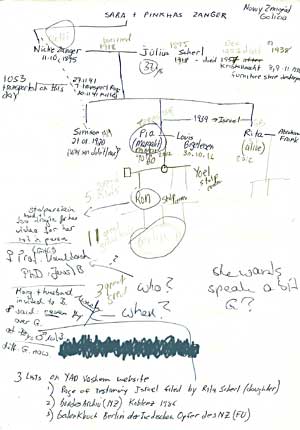 |
Diagraming the information Sharon Kuckuck received |
ItôÇs difficult to let go of a good plan. I put the article aside for a few weeks but as the end of the year approached I had two things which needed to be finished: preparation for my daughterôÇs upcoming Bat Mitzvah and NicheôÇs story.
Bat Mitzvah preparation has been a complicated affair of event planning, family relations and reminders of what it means to me to be Jewish. But putting together the information IôÇve collected about Niche made me feel so sad about the city I loved. IôÇve worked as a tour guide and have always been enthusiastic to learn about ôÇeverything BerlinôÇ, even its past. Facts and information about the past have given me an emotional distance, rather than what actually happened here.
NicheôÇs story brought up a raw emotion about my street ã where my favorite cafes are, the building where I live is, and the apartment I look forward to going home to everyday. This suddenly became very personal.
I have tried to let NicheôÇs voice be heard again through Pia but it is not the whole story. All the facts are not here. They arenôÇt mine to give. As the recipient of this story I feel for sure I have gotten the greater gift.
Next week I will celebrate my daughter becoming a Bat Mitzvah and the joy of creating a new Jewish tradition in Berlin. When I say the mournerôÇs Kaddisch at the end of the service I will add Niche and her son Simson to the memory of my grandmother and the sad closeness that can come from remembering.
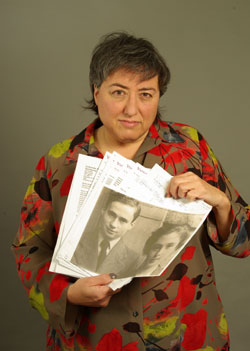
Berlin, 19.11.2012 Sharon Kuckuck
Linkshenner-kuckuck.comsharon.kuckuck@yahoo.comNotes, sources and special thanks to:Family Scherl, especially Pia ã Margalit Scherl and Ron Segal in Israel
Maya Waechter, translator
Hannelore Emmerich at the Museen Tempelhof Schoeneberg
Frau Ljilja Ruhnke at the Die Austellung "Wir Sind Nachbarn" Berlin-SchûÑneberg
Yad Vashem ã World Center for Holocaust Research, Education, Documentation and Commemoration at
www.yadvashem.orgDie "Judendeportationen" aus dem Deutschen Reich von 1941-1945, Alfred Gottwaldt, Diana Schulle, 2005
Das Projekt "Jû¥dische Frauengeschichte(n) in Berlin - Writing Girls - Journalismus in den Neuen Medien" wurde ermûÑglich durch eine
Kooperation der Stiftung ZURûCKGEBEN, Stiftung zur FûÑrderung jû¥discher Frauen in Kunst und Wissenschaft
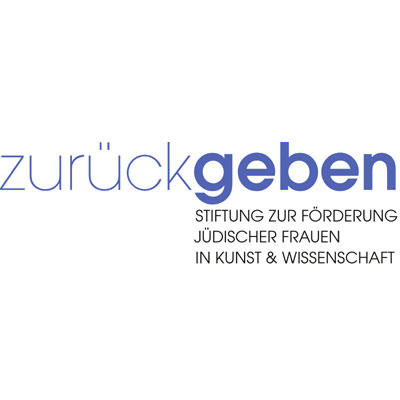
und der Stiftung Erinnerung, Verantwortung und Zukunft (EVZ)
 Weitere Informationen finden Sie unter:www.stiftung-zurueckgeben.dewww.stiftung-evz.de
Weitere Informationen finden Sie unter:www.stiftung-zurueckgeben.dewww.stiftung-evz.deCopyright photos of Sharon Kuckuck: Sharon Adler
